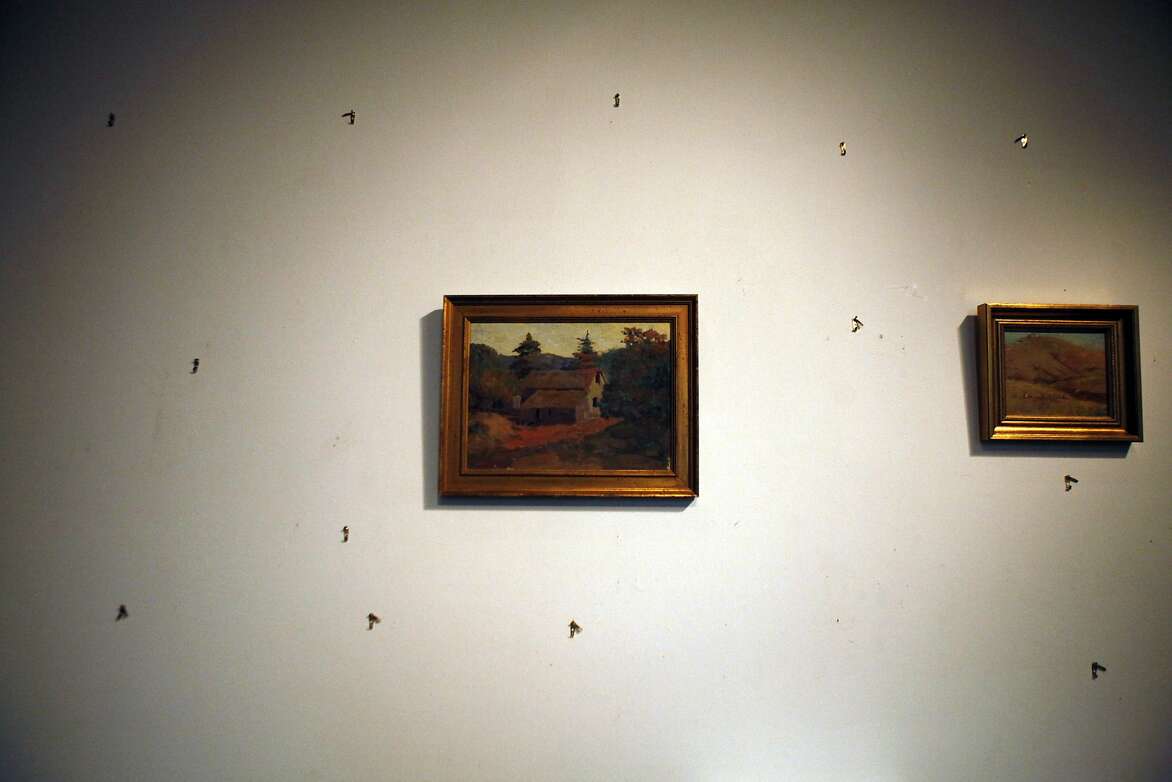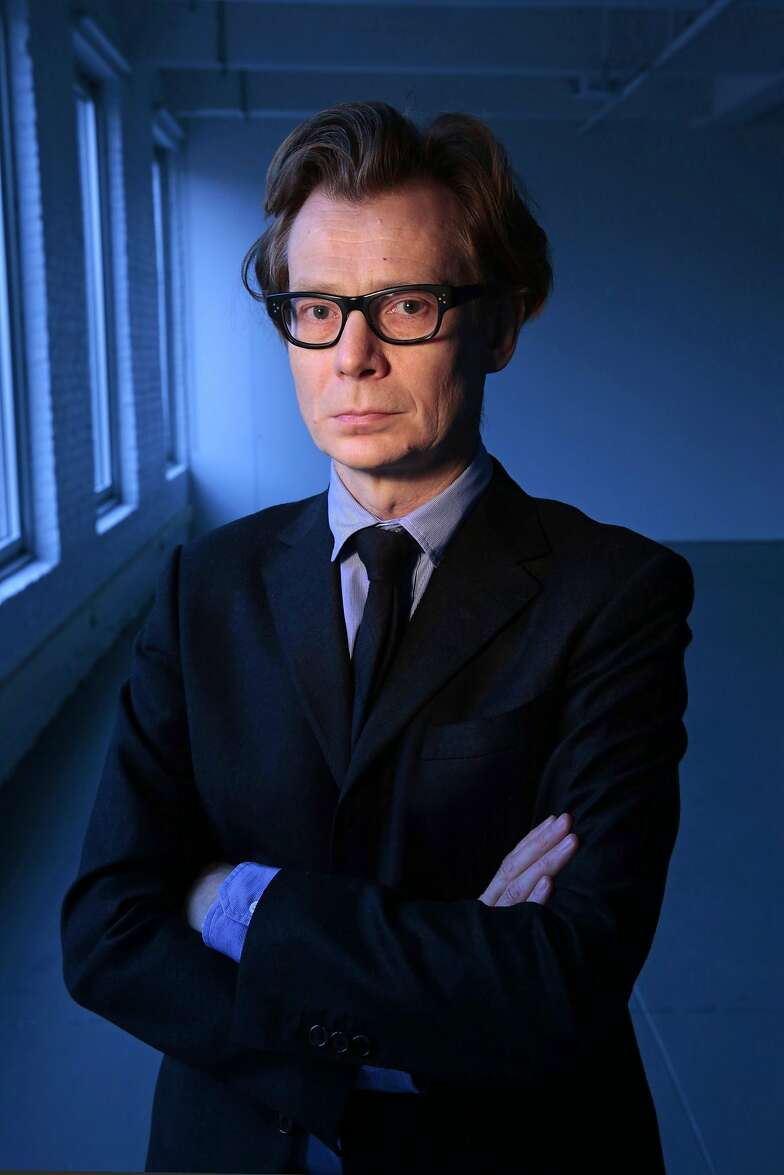Art galleries swallowed up by S.F. real estate boom
Downtown district transforming - dealers move or close up
A former display wall at the George Krevsky Gallery stands nearly empty after most of the artworks were packed up for moving. The gallery is one of several leaving the downtown building at 77 Geary St.
February 26, 2014 | Updated: February 27, 2014 8:06am
In another blow to San Francisco's ailing downtown gallery district, several prominent art galleries have received eviction notices - the latest casualties of the city's commercial real estate boom.
The George Krevsky Gallery, the Rena Bransten Gallery and Patricia Sweetow Gallery, all occupants of 77 Geary St., will be leaving soon to make way for their high-tech neighbor, MuleSoft, an Internet services company that needed to expand.
"We live in a tough neighborhood," Krevsky said, "at the intersection of tech and greed. It's impacted the world I've been working in passionately for 30 years."
Several other galleries in the downtown area had already been forced to go dark in recent months, prominently those run by Eli Ridgway, who has since moved to Wyoming, and Don Soker, with more than 40 years in the business.
The Togonon and Marx & Zavattero galleries, also former occupants of 77 Geary, were edged out by rent increases earlier. After searching for a year for a suitable address to reopen, Marx & Zavattero announced the end of its business.
Working from home
"I planned after 22 years to change the direction of the gallery, but not like this," Krevsky told The Chronicle three months ago. "I've talked to my peers in Chicago and Los Angeles, and they're facing some of the same challenges."
Like many other art dealers, Krevsky, who will conduct business from his Oakland home in the near term, sees the very nature of the trade changing, with the waning of an audience devoted to looking at art in person. "Ten years from now," he said, "traditional galleries will be a thing of the past. The auction houses and art fairs will have taken over, and the Internet."
Prospective buyers of contemporary art are increasingly focusing on the purchases as a speculative investment. Art promotion and sales via the Internet have spurred this development. So has the proliferation of art fairs, where galleries vetted by promoters, often on the basis of their business prominence, set out their wares in booths before throngs of strolling visitors. Over the past decade, art fairs have accounted for an increasing share of art commerce, nationally and internationally.
Auctions affect pricing
Meanwhile, auction houses in the United States and abroad have used competitive bidding to drive up prices of what's called blue-chip art to stratospheric levels, leaving in the dust the lower tiers of the art economy.
As far afield as Toronto and London, mid-level art gallery businesses face extinction by fast-growing, cash-rich enterprises hungry for office space in top locations.
"It's not just that you go out and look for another space," said Patricia Sweetow, whose 77 Geary St. mezzanine space will close by summer. "It's about access - will you reach a new audience? What does it cost? Art fairs give you access to an audience that doesn't depend so much on location, if you can pull it off and you're accepted."
Jim Adler of Adler & Co., the sole gallery with a long-term lease at 77 Geary, said: "We're going into our seventh year here. We had an understanding going in that we could extend our lease, and we were happy to do so. ... I'm really sorry that Rena (Bransten) is leaving ... but the landlord is not Darth Vader, and anyone who characterizes it that way isn't being completely fair. They were predisposed to want to keep a cultural mix in the building."
Growing company
MuleSoft's CEO, Greg Schott, said the company has been growing rapidly and had spread into vacant parts of the building, owned by Yale Properties of La Jolla, before being offered the chance to expand in an adjacent space. "It opened up the possibility to continue growing our company in the same building with people who are passionate about living and working in San Francisco," Schott said.
Some former downtown galleries have already sought refuge on more hospitable turf. The Jack Fischer, George Lawson and Catharine Clark galleries - several forced out of the other downtown art showplace hub, 49 Geary St. - relocated in the fall to the area just northeast of Potrero Hill, now known as Potrero Flats.
The Hosfelt Gallery, displaced more than two years ago from its now-demolished Clementina Street quarters, had already staked out the Potrero Flats neighborhood as a potential gallery hub. But as commercial rents surge in that area, too, Hosfelt and the others may again face the dilemma of whether to stay, relocate or do business another way. Artists in the once-affordable area similarly face a rent squeeze.
"I feel the rise of the art fair phenomenon has damaged the local brick-and-mortar gallery model more than gentrification," said Griff Williams, whose Gallery 16 is on Third Street. "Buyers increasingly flock to these mobile art malls to buy, negotiate and cajole, rather than visit and support the local culture in their neighborhoods. And, too often, galleries willingly turn their backs on their one true asset, their role as a gathering place for people and rigorous ideas."











